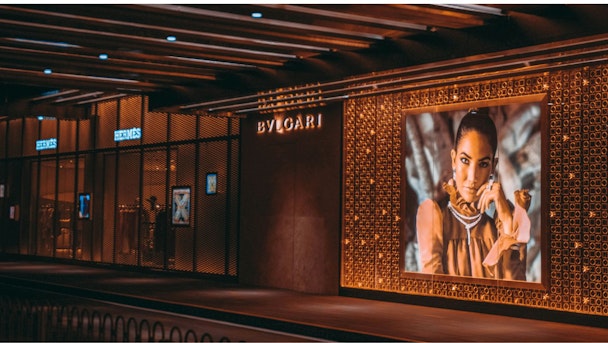China's luxury market: Current trends and future opportunities for brands
China's luxury market, driven by domestic spending, younger consumers, and sustainability, presents European brands with growth opportunities demanding tailored strategies and digital engagement, says Petal Ads.

The face of China’s luxury market is constantly changing; marked by the surge in domestic spending, a growing appetite among the younger generation, and a shift towards sustainable and ethical goods.
For European brands eyeing growth and expansion, this exciting shift presents them with ample opportunities. However, seizing them requires a unique approach, a clear understanding of the target audience, and a personalized strategy.
The immense potential of China's luxury market
China's significance in the global luxury market cannot be overstated. Bain & Company revealed that the country is responsible for nearly 35% of global luxury goods consumption, an impressive statistic that underscores its pivotal role in shaping the industry's trajectory. The reopening of the Chinese economy saw a significant and consistent surge in luxury spending, fueled by factors such as increased disposable income, a booming middle class, and a rising appetite for premium items.
Luxury spending in China is also set to increase steadily, with the country accounting for 22-24% of luxury sales across the globe last year. Moreover, by 2030, the figure is expected to hit up to 40% of the world’s total. Chinese consumers are attaching greater relative importance to fashion, lifestyle, and jewellery, and other high-end goods, signalling a robust appetite for luxury consumption.
Demographic shift: The rise of younger consumers
One exciting shift happening in China's luxury market is that younger consumers, particularly Gen Z and Millennials, are emerging as key players driving luxury consumption. These discerning customers, who represent 60% of the population below 30 years of age, are digitally savvy, wealthy, travel frequently, and love high quality and premium products due to their longevity and sustainability.
In 2022, young consumers accounted for a whopping €210bn in the personal luxury market – which are luxury items purchased for one’s own enjoyment or self-expression – a big increase from previous years, with the figure predicted to double by 2026.
The younger generation’s taste buds lean towards sustainability, innovation, and community engagement, standing in stark contrast to the preferences of the older generation, reflecting a generational shift in consumer behavior that brands should pay attention to.
The role of digital marketing in China's luxury sector
Given China’s soaring internet access and smartphone usage, it’s extra crucial to invest in a digital marketing strategy to effectively engage Chinese consumers. These digital natives often spend time on online channels to discover, learn more about, and even purchase luxury goods.
With e-commerce marketplaces like Tmall, JD.com, Xiaohongshu, and official retail websites taking the Chinese market by storm, they present an ideal gateway for luxury brands seeking to enter the market. Even so, it can be an uphill battle for companies in Europe to glean insights on the purchasing behaviour and trends of Chinese consumers, including what it takes to attract more foot traffic to retail stores.
Petal Ads, Huawei’s mobile advertising platform, boasts an extensive coverage of Huawei devices and many high-quality users. With its deep understanding of Chinese consumers, it helps brands create personalized marketing campaigns that resonate.
The platform draws rich consumer data from its wide user base, to provide precise targeting and personalized experiences. Counterpoint Research revealed Huawei ranked top in China in smartphone sales in January 2024, with Huawei’s foldable handset reaching 51.23% market share in China, and ranking top at the end of 2023 according to BCI’s Q4 2023 report.
Petal Ads supports various formats, including connected TV (CTV), popular in China and capable of attracting large viewership and empowering luxury brands to deliver effective messaging. Huawei's all-scenario advertising solutions offer innovative 3D effect ad display, stunning visual impact, and an omnichannel approach, allowing marketers to tap into this trend.
Offering exclusive and immersive touch points, Petal Ads enhances brand visibility through cross-device advertising with local support. Through hyper-personalization and real-time adaptation of marketing strategies, brands can elevate every touchpoint of the customer journey, fostering deeper engagement and loyalty.
To thrive in China’s luxury market, brands must embrace agility and creativity. This could mean placing trust in experts well-versed in the subtleties of this market – crucial for engaging this unique audience.
Content by The Drum Network member:

Petal Ads
Petal Ads is a fast-growing and industry-leading mobile ad platform for publishers, advertisers and marketers who want to drive growth and extend their audience.
Petal...

